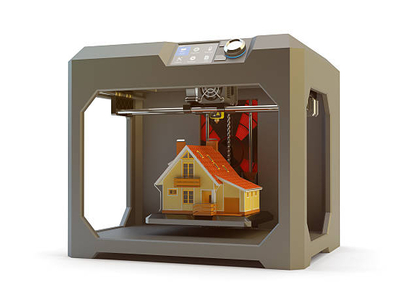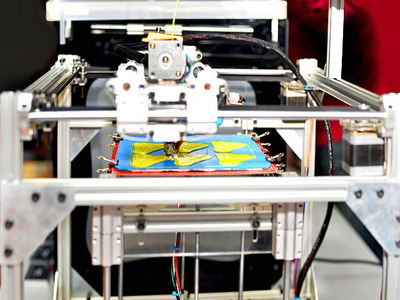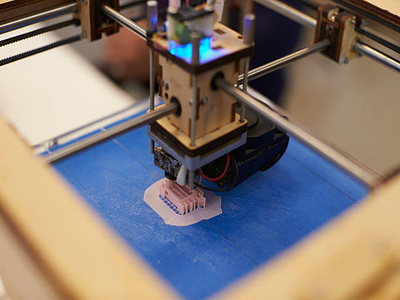How thin can a 3D printer print?
On average, a 3D printer can print layers as thin as 0.004 or 0.005 inches. Any thinner than this, and your prints are more likely to run into issues.
That said, different printers have different capabilities, and the thickness of the object you are trying to print will affect things.
This blog will explore how thin a 3D printer prints in detail. We will look at different factors, and discuss some limitations of light printing objects.
how thin can a 3D printer Print?

It’s no secret that the accuracy of a three-dimensional (or “additive”) printer is generally relatively low.
The z-axis, or “height” direction, is particularly problematic because the layer thickness of most additive printers is between 0.005 and 0.010 inches (0.127-0.254 mm).
If you’re trying to print a model with very delicate features – say, less than 0.005 inches (0.127 mm) – you are likely to run into problems.
There are two main ways to get around this limitation:
- The first is to use a “slicer” program to generate extremely thin layers – down to 0.001 inches (0.0254 mm) or even less with a bit of practice.
- The second way is to use a “multipass” printing technique to print each layer several times, using slightly different paths each time.
This will effectively allow you to “average out” the inaccuracies of the printer and produce much smoother results.
Which approach is best for you will depend on how your particular printer works and your desired level of accuracy.
If you are just getting started with additive printing, we recommend starting with thin layers and working your way up.
Once you have a feel for how your printer handles thin layers, you can experiment with multipass printing to see if it gives you the results you’re looking for.
Factors Affecting Print Sizes

Different printers have different capabilities when it comes to printing thin objects.
Some printers can print things only a few microns thick, while others may have a minimum thickness of several hundred microns.
The type of printer that you are using will play a significant role in how thin your object can be.
Type Of Object
One factor to consider is the type of object you are trying to print.
If you are printing a flat object, a thinner print will be easier to achieve than if you are trying to print an object with lots of curves and contours.
Prints with more curves require printers to make more passes over the object when printing.
More passes provide more opportunity for material to build up in thicker areas, resulting in a less-than-perfect print.
Thickness Of Object
Finally, the thickness of your object will also play a role in how thin your printer can go.
If you are trying to print an object that is only a few microns thick, you may have better luck with a laser-based printer.
Laser-based printers use a focused beam of light to vaporize the material, allowing them to achieve exact prints.
If you’re trying to print an object that is several hundred microns thick, then a 3D printer would work.
However, the more microns you reduce, the more your print size will decrease.
In the end, if you want to print an object with high strength, you will need to print them with thinner values, from 1-3mm thickness.
If you’re printing more conventional models, you can make them at 4mm wall thickness and a bottom thickness of 0mm.
What is the Minimum Thickness of a 3D Printed Model?

Different types of filament can be used in a printer, each with its own 3D printer pros and cons.
The type of filament being used will impact how thin a model can be printed.
PLA is a material known for being strong and durable but is more likely to break during printing.
If you’re using a solid filament like PLA, you will probably be able to print something as thin as 0.05mm.
However, if you are using a flexible filament, you might need to increase the thickness to 0.15mm or more.
And if you are using a printer with a very thin layer capability, you could potentially go as low as 0.01mm.
Another variable that will affect how thin a model can be printed is the type of printer used.
Some printers can print thinner layers than others and can create models with finer details with less chance of breakage.
Want some more tips about using PLA? Check out the video below, which discusses a few things you will need to know before using PLA:
What if I Need a Thinner Model?
If you want to know how thin your 3D printer can print, create a model for 3D printing that is thinner than what your printer can manage, and test it out.
First, use multiple passes to slowly build up the layers. This will take more time, but it will be worth it.
Another option is to make your model hollow. This way, you do not have to worry about getting the walls too thin.
You can also add supports inside the model so that it doesn’t collapse in on itself.
The last thing you can do is try using a different type of filament.
Some filaments are explicitly designed for printing thin objects. While they might be more expensive, they could help you get the results you are wanting.
No matter what you need to print, there is a way to make it happen.
With a little bit of creativity and ingenuity, you can print anything you can imagine. Don’t be afraid to experiment and push the limits of your printer.
Conclusion
After extensive research, we concluded that a printer can print as thin as 0.004 or 0.005 inches on average.
However, this is not the recommended setting for most printers as it can cause 3D printing problems such as warping and poor layer adhesion.
The best way to avoid these problems is to use a thicker layer height when printing.
We recommend using a layer height of 0.010 inches or higher when printing your models to help ensure that your prints turn out looking great!
READ MORE